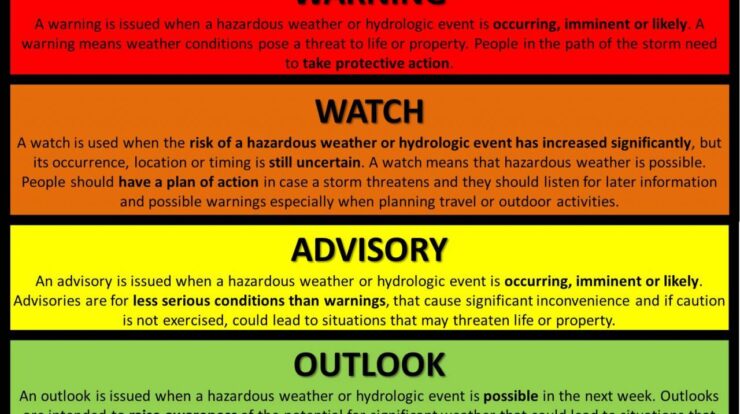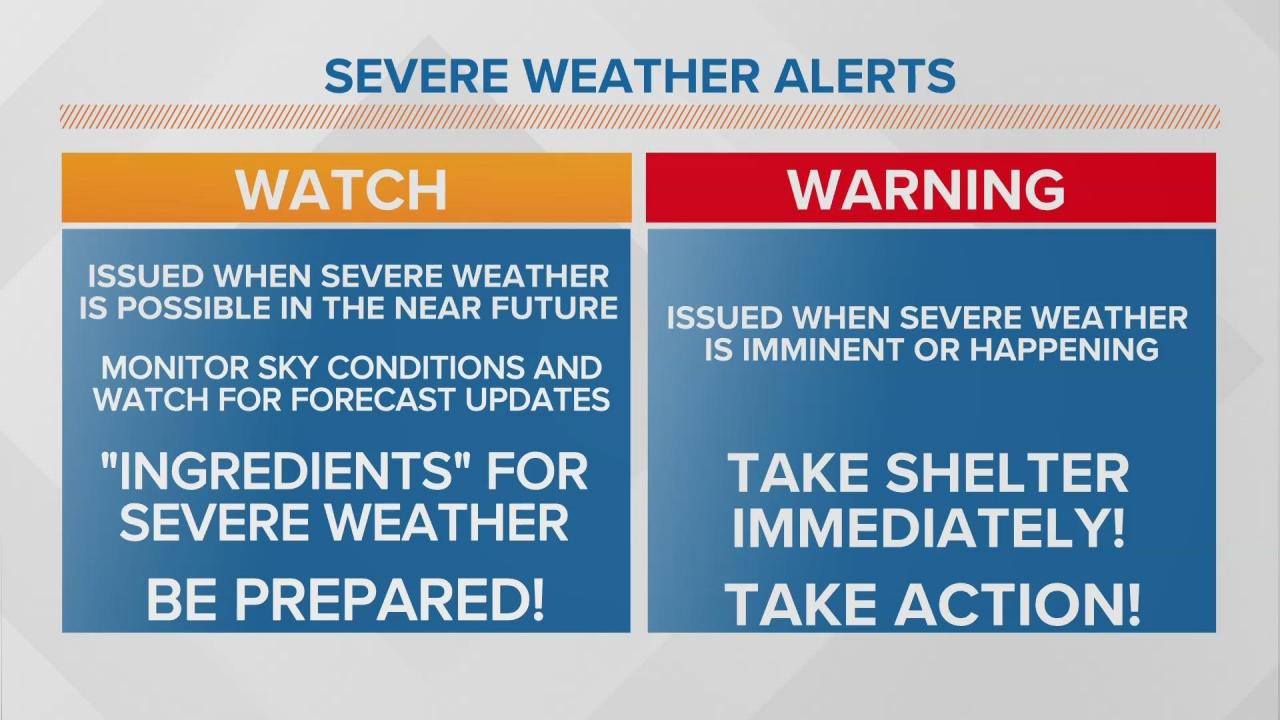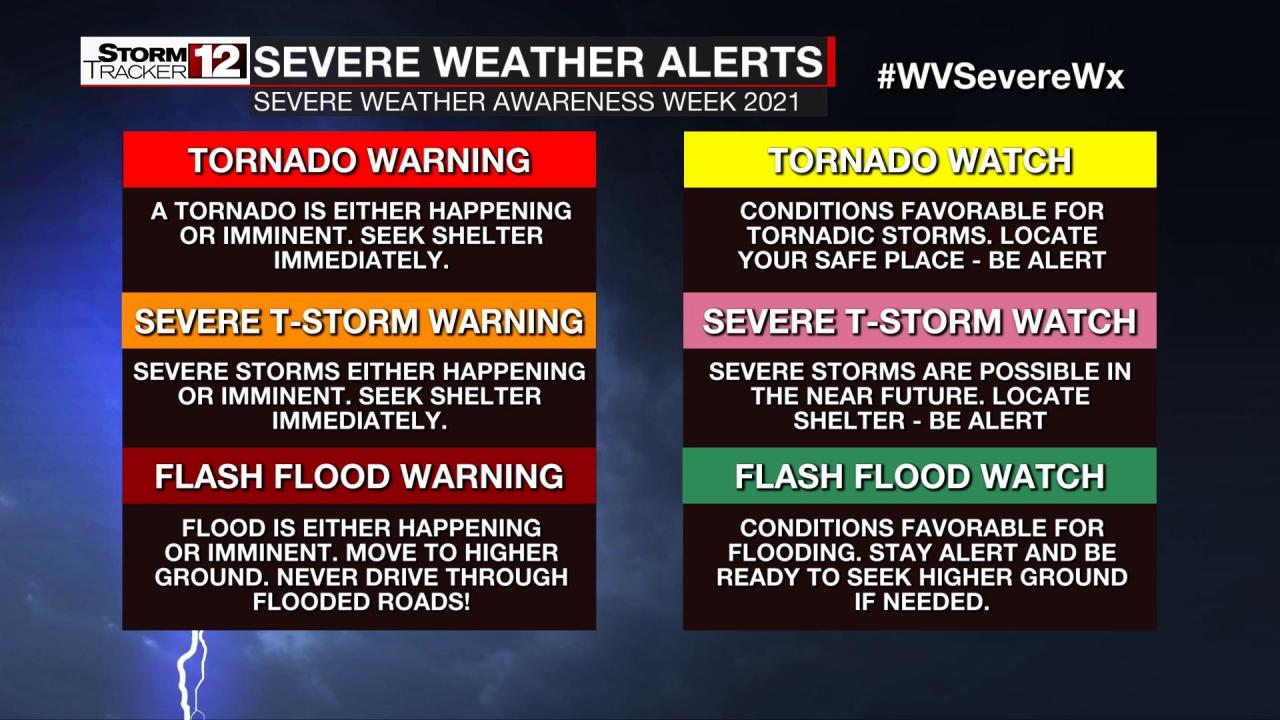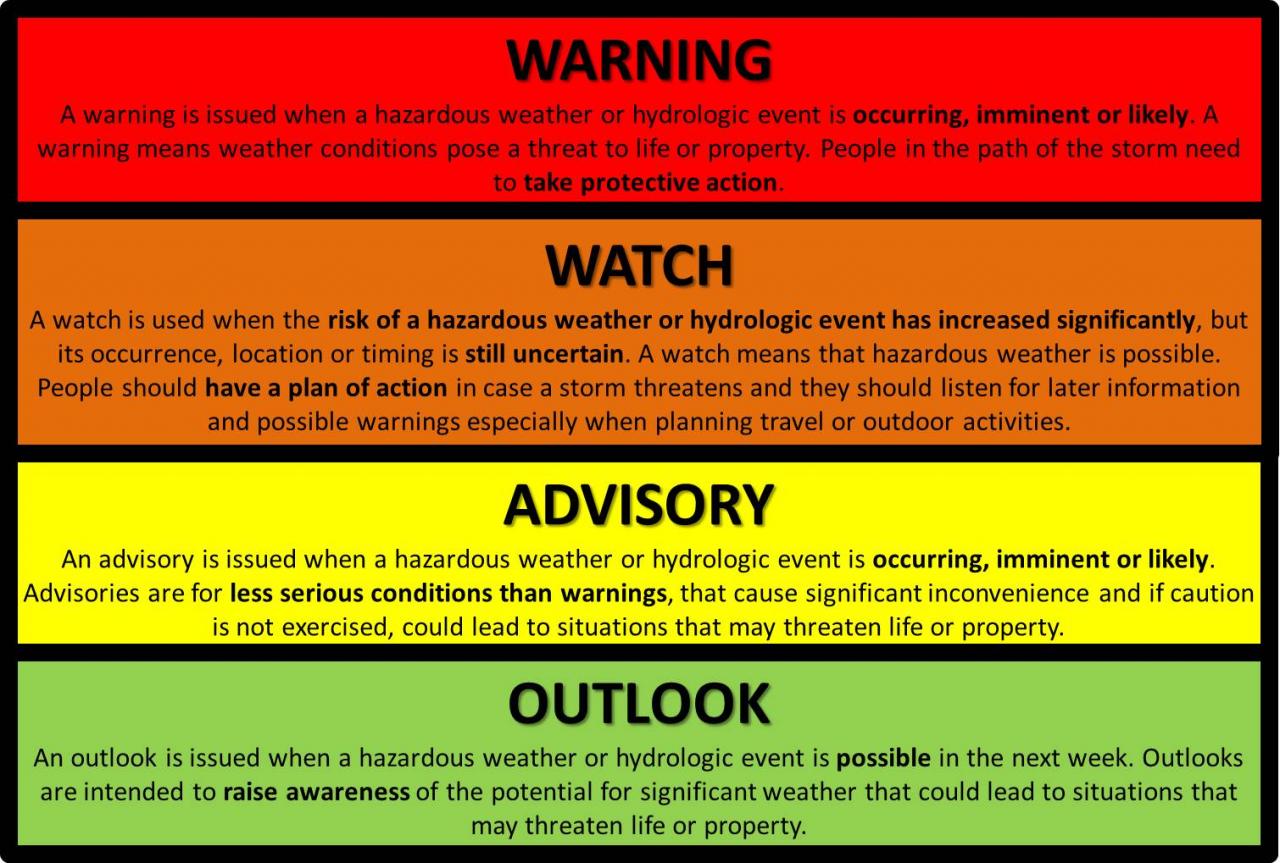
Navigating the difference between watch and warning is crucial for comprehending the severity of potential hazards. These terms, often used interchangeably, hold distinct meanings and implications, shaping our response to impending threats.
A watch signifies the possibility of a hazardous event occurring within a specified area. It serves as an alert, prompting heightened awareness and preparedness. A warning, on the other hand, indicates that the event is imminent or already underway, demanding immediate action to protect life and property.
Definition of Watch and Warning

A watch and a warning are two distinct types of alerts issued by weather forecasting agencies to inform the public about potential or imminent hazardous weather conditions. Both watches and warnings are designed to provide timely information to help people make informed decisions about their safety.
A watchindicates that conditions are favorable for a hazardous weather event to develop. It does not mean that the event is imminent or inevitable, but it does mean that people should be prepared to take action if the situation worsens.
A warning, on the other hand, indicates that a hazardous weather event is either occurring or is imminent. It means that people should take immediate action to protect themselves and their property.
The main difference between a watch and a warning is the level of certainty. A watch is issued when there is a potential for a hazardous weather event, while a warning is issued when the event is either occurring or is imminent.
Purpose of Watch and Warning

The purpose of issuing a watch or a warning is to provide timely information to the public so that they can make informed decisions about their safety. Watches are issued to give people time to prepare for a potential hazardous weather event, while warnings are issued to tell people to take immediate action to protect themselves and their property.
Watches and warnings are issued for a variety of hazardous weather events, including:
- Tornadoes
- Hurricanes
- Floods
- Blizzards
- Wildfires
By issuing watches and warnings, weather forecasting agencies help to keep the public informed about potential and imminent hazardous weather events and provide them with the information they need to make informed decisions about their safety.
Issuing Process of Watch and Warning
The process of issuing a watch or a warning begins with the National Weather Service (NWS). The NWS monitors weather conditions 24 hours a day, 7 days a week, and issues watches and warnings when necessary.
When the NWS issues a watch, it means that conditions are favorable for a hazardous weather event to develop. The NWS will issue a warning when the event is either occurring or is imminent.
Watches and warnings are issued through a variety of channels, including:
- Television
- Radio
- Newspapers
- The Internet
The NWS also has a system of weather alert radios that can be programmed to receive watches and warnings for specific areas.
Dissemination of Watch and Warning

Watches and warnings are disseminated through a variety of channels, including:
- Television
- Radio
- Newspapers
- The Internet
- Weather alert radios
The NWS also has a system of weather alert radios that can be programmed to receive watches and warnings for specific areas.
It is important for people to have multiple ways to receive watches and warnings so that they can stay informed about potential and imminent hazardous weather events.
Response to Watch and Warning: Difference Between Watch And Warning
When a watch is issued, people should be prepared to take action if the situation worsens. This may include:
- Gathering supplies
- Making an evacuation plan
- Staying informed about the latest weather conditions
When a warning is issued, people should take immediate action to protect themselves and their property. This may include:
- Seeking shelter
- Evacuating the area
- Following the instructions of local authorities
It is important to remember that watches and warnings are issued to provide timely information to the public so that they can make informed decisions about their safety. By taking the appropriate actions when a watch or warning is issued, people can help to protect themselves and their property from hazardous weather events.
Examples of Watch and Warning
| Hazard Type | Location | Date | Issuing Agency |
|---|---|---|---|
| Tornado | Oklahoma City, OK | May 20, 2013 | National Weather Service |
| Hurricane | New York City, NY | October 29, 2012 | National Hurricane Center |
| Flood | Houston, TX | April 18, 2016 | National Weather Service |
| Blizzard | Boston, MA | February 9, 2015 | National Weather Service |
| Wildfire | Los Angeles, CA | November 8, 2018 | National Interagency Fire Center |
Final Summary
Understanding the difference between watch and warning empowers us to make informed decisions during emergencies. By recognizing the subtle distinctions, we can respond appropriately, ensuring our safety and the well-being of our communities.
Common Queries
What is the key difference between a watch and a warning?
A watch indicates the potential for a hazardous event, while a warning signifies that the event is imminent or ongoing.
When should I take action in response to a watch?
During a watch, stay informed and be prepared to act if conditions worsen. Gather essential supplies and make a plan for evacuation if necessary.
What should I do when a warning is issued?
Take immediate action to protect yourself and others. Follow instructions from authorities, seek shelter, and evacuate if directed.





